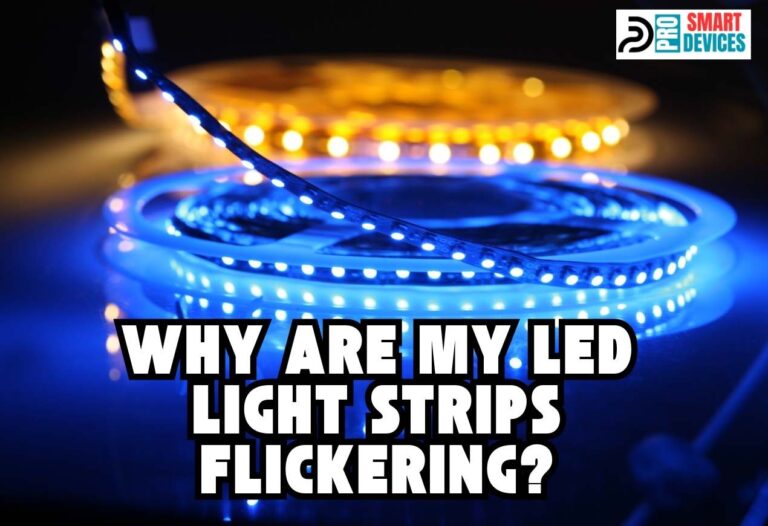Can You Use Philips Hue to Grow Plants Indoors?
When it comes to smart home lighting, Philips Hue is at the top of the list of almost all smart home enthusiasts. They are versatile and can change the entire ambience of your premises beyond imagination. However, can you use Philips Hue to grow plants? Can they also meet the specific light spectrum needs essential for plant growth?
All you have to do is grab your favorite coffee and scroll through the article as we are about to discuss everything you need to make an informed decision about whether using Philips Hue lights is a good option to consider as grow bulbs.
Can You Use Philips Hue to Grow Plants?
Yes, you can use Philips Hue to grow plants indoors. However, given the fact that working as a grow plant light is not their primary objective, there are certain factors that you need to think of if you are to successfully use Philips Hue bulbs to grow plants.
Light Spectrum
Different types of plants and stages require different light spectrums for optimal growth. For instance, blue lights are ideal to improve vegetative growth while red ones are the best when it comes to flowering.

The best part of the story is that Philips Hue lights can emit different colors, which allows you to provide the plants with the required light spectrum at different growth stages. So, when using Philips Hue as grow bulbs, make sure you identify the stage your plants are in and customize the lights accordingly.
Intensity
Usually, grow bulbs come with high intensity, but it is the opposite with Philips Hue bulbs, as they generally have low intensity. This is where the type of plant you choose with Philips Hue plays an important role.
Simply put, we highly recommend using Philips Hue lights for smaller plants that don’t require high light intensity; herbs and seedlings tend to work with these lights best.
If you are trying to grow tomatoes or peppers, for example, Philips Hue might not be the best option, as these types of plants require higher lumens. In this case, you will have to use multiple Philips Hue bulbs to provide the plants with adequate light.
Duration
Most plants need 12-16 hours of light daily, and using artificial lights to replicate sunlight can be difficult in more ways than one. However, this isn’t a huge issue with Philips Hue lights, as they are programable with timers and schedules.
Moreover, the power consumption of Philips Hue bulbs is lower than usual grow bulbs which you can use to your advantage to provide the plants with consistent light as per their demand.
How to Use Philips Hue to Grow Plants?
As you now know the factors and using Hue bulbs for plants is a definite possibility, let’s see how you can use Philips Hue bulbs to grow plants indoors.
First Step – Choosing the Plants and Lights
As we previously mentioned, choosing the right type of plants is super important; basil, parsley, mint, lettuce, and spinach to name a few.
The same applies to the type of Philips Hue bulbs. There are a bucketful of Philips Hue products on the market and you will have to go with Philips Hue lights with high lumen output if the plants you opt for require high intensity light. For example, bulbs that produce at least 800 lumens can be effective for moderate light plants.
Although the Philips Hue is well-equipped with the ability to change the color, the primary focus of these bulbs is to provide white light. So, for a balanced spectrum, you can consider using multiple bulbs for better results.
2nd Step – Setting Up the Growing Area
If possible, we suggest you place your plants in a place that gets natural sunlight to supplement the Hue lights. Ensure the plants are within 12-24 inches of the light and distribute even light for all plants.
If you find it challenging to provide the plants with sunlight to support the light of Hue or the lights you choose are not high in lumens, consider using light reflectors to enhance the light condition.
In addition, if your plants show signs of stress, adjust the intensity using the app. Dim the lights during sensitive growth stages.
3rd Step – Scheduling
Use your Philips Hue app to set timers for the light according to the need of the plant type and the stages of your plants. You can follow the same to change the colors of the bulbs.
A crucial step that most people tend to forget is that facilitating the plants with dark time to mimic the night conditions. So, make sure to give plants a dark period when the lights are not in operation.
Here is a useful video on Philips Hue app.
4th Step – Monitoring
If you are using Philips Hue bulbs as an alternative to grow bulbs, it is essential to keep a close eye on the plants, especially during the early stage of the process.
A leggy plant says that it is in need of more light. On the other hand, if you notice scorched leaves, it is an indicator that the intensity of lights is too high. The point is that it is your duty to monitor your plants and adjust the lighting accordingly for better results.
Although, we are not touching on the watering side of things, as it is not the primary focus of this article, be attentive to your plants’ watering needs. The light is not only the important factor when it comes to growing plants. We hope you already know it!
FAQ
What Type of Hue Lights are Suitable for Plants?
When choosing Philips Hue lights for growing plants, the Philips Hue White and Color Ambiance bulbs are most suitable compared to others. Philips Hue Cool white light (above 5000K) is ideal for promoting vegetative growth, while warm white light (below 3000K) can support flowering and fruiting.
Is it Better to Use Philips Hue Bulbs Alone or With Grow Lights?
When combined Philips Hue with grow lights, it can yield better results. As we explained earlier, although using Hue bulbs alone for plants is a possibility, it is not what they are designed for especially considering the intensity of lights. These lights are more suitable for small plants.
Can I use Philips Hue Lights in a Hydroponic Setup?
Yes, you can use Philips Hue lights in a hydroponic setup, especially as a supplementary option in places where providing natural sunlight is challenging. However, we recommend using Hue lights in conjunction with specialized grow lights for maximum results.
In summary, if your intention is to grow one or a few of small plants at your home using Philips Hue lights as grow lights is a definite option. However, for bigger plants it might not be the best idea to use Hue lights as grow lights.
We hope our article is clear and you had answers to your questions. If you need further clarification, the comment section is all yours. Have a great day!







